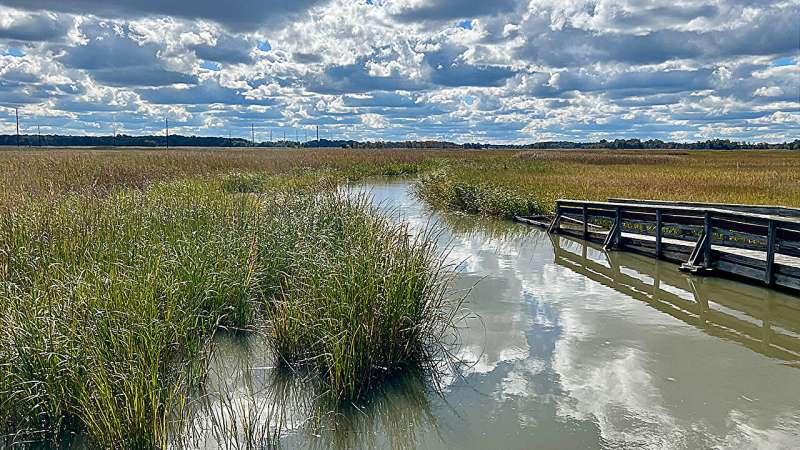This article has been reviewed according to Science X's editorial process and policies. Editors have highlighted the following attributes while ensuring the content's credibility:
fact-checked
trusted source
proofread
Measuring and modeling methane emissions in wetlands

Global atmospheric methane concentrations have risen steadily since 2006. Growth in agriculture, transportation, and industry are partly to blame, but so too is the rise in biogenic emissions, or emissions from natural sources.
Biogenic sources are as varied and complex as the ecosystems from which they derive—recent work highlighted tree stems as one overlooked emitter—but wetlands stand out as the largest natural methane contributor. In fact, they account for about a third of total methane emissions, natural or otherwise. But understanding wetland methane dynamics is complicated because they are affected by so many factors, ranging from salinity to temperature to vegetation types to water levels. Into these soggy reaches wade Andrew Hill and colleagues, with an approach to disentangle these variables.
The authors combined empirical dynamic modeling and convergent cross mapping to analyze 5 years' worth of methane flux measurements in a salt marsh in the St. Jones Reserve, part of the Delaware National Estuarine Research Reserve and the AmeriFlux network. The algorithms incorporated 18 environmental measurements, from wind speed to atmospheric pressure, to characterize how they interact to shape methane emissions. The research is published in the Journal of Geophysical Research: Biogeosciences.
The results showed that methane levels' response to environmental shifts can lag by up to 35 days. During the day, emissions changes were most closely tied to the ebb and flow of water levels. But seasonal patterns of emission rates were most influenced by fluctuations in temperature, dissolved oxygen levels, and gross primary production.
As methane emissions continue to climb, they could trigger a positive feedback loop in which rising atmospheric methane concentrations instigate greater ecosystem releases. By revealing the mechanics of methane dynamics in the salt marsh, the study offers a framework for improving wetland emission estimates and may help clarify a strategy for mitigating the rise in global methane concentrations.
More information: Andrew C. Hill et al, Empirical Dynamic Modeling Reveals Complexity of Methane Fluxes in a Temperate Salt Marsh, Journal of Geophysical Research: Biogeosciences (2024). DOI: 10.1029/2023JG007630
Provided by American Geophysical Union
This story is republished courtesy of Eos, hosted by the American Geophysical Union. Read the original story here.





















